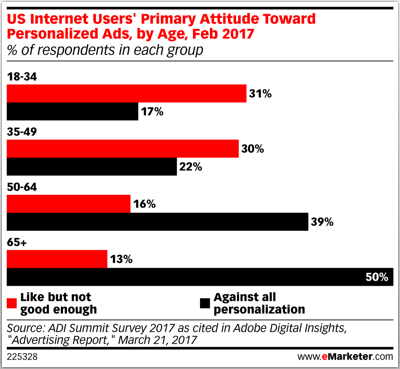
Amplify your reach and drive results with our tailored paid media strategies.

As a long-time digital marketer, I’ve seen many trends in the ways brands buy digital media. Early on, brands leveraged digital as an extension of their offline buys, aiming to increase reach and frequency, with audience inputs limited to generalities like age, gender and household income.
With the rise of programmatic, many brands used technology to get as many digital impressions or clicks as possible in a cost-efficient manner. Volume was the key, as long as the “eyeballs” were cheap. Unfortunately, this was a race to the bottom, resulting in few truly qualified leads. Today we see many brands striving to use digital media to target the RIGHT customers for their business. It’s no longer about reach and frequency or extreme cost efficiencies. Brands are starting to recognize the power of digital media’s myriad targeting capabilities, and seek to use it to the peak of its abilities. Here are my top tips for finding great new customers with digital media targeting.
Different people rely on different types of communication channels and platforms. For example, if your research indicates that your best audiences are significantly more likely to watch online video than the general population, it would make sense to create a digital media buying strategy that features online video ads, placements on video viewing platforms, etc.
Insights like these explain why customer segmentation and/or persona development work is so essential for laying the groundwork of any successful campaign. Without a solid understanding of where your target audience spends their time and where they are receptive to interacting with brands and receiving brand messages, you are likely to waste time, effort and money.
In order to attract the right customer mix, the importance of the timing as well as the content of your messaging should not be underestimated. Are you deploying the right message to the right audience at the right time? Though promotional messaging may convert well in theory, where (what channels) and when during the customer journey they are deployed are key to their success.
At what point in the customer journey should a brand indicate its awareness of audience preferences? As digital audiences evolve, many users are becoming increasingly receptive to personalized marketing that speaks directly to their situation, needs, lifestyle and preferences. More and more, consumers are willing to give up a bit of personal privacy in exchange for receiving marketing that actually matters to them.
If the goal of a marketing program is to entice a more favorable customer mix, understanding what makes them tick and then messaging to that can help convert a more ideal customer. Clearly, if this is a new customer, brands won’t be able to personalize on a 1:1 basis, but even tailoring the message to known characteristics, behaviors or their location can help. This is especially important when dealing with younger target audiences.
In a survey by the AMA and Virtual Incentives, 80% of survey respondents said that personalized marketing made them more likely to have brand recall and to shop that brand. This is especially important when targeting Millennials and Gen Xers, as seen in this attitudinal chart from eMarketer:

Subscribe to our monthly newsletter.
While initial audience research, media targeting and messaging are all crucial to improving a brand’s customer mix with digital media, it’s also imperative to analyze customer data on a regular basis. As new customers are acquired, a business intelligence exercise that can evaluate the customer data needs to be part of the equation.
Often, brands do not have the infrastructure in place to effectively capture this data across multiple channels, and follow the lifetime value of that user, but by investing in analytics system(s), you will be ready. As the data flows in, business intelligence teams can begin to see how profitable these customers are and which channels are capturing the best customers. From there, it’s much easier to decide how much to spend acquiring customers in each channel.
There are multiple considerations that go into a successful digital media strategy and approach when the goal is acquiring the right mix of customers. The heaviest lifting tends to come at the beginning – digging into persona research and analytics/BI infrastructure set-up and data strategy planning. Communications and messaging strategies should not be taken lightly either, but with a test-and-earn approach, you can learn on the fly and adapt to what’s working. The media planning and targeting is the easy part! Though there are many steps to put into place, the benefits of a media program that attracts a higher value, “stickier” customer will definitely outweigh the challenges.
Jenna Watson is the VP Digital Media at DAC and is based out of the Chicago office. To learn more about how digital strategy can help drive your business objectives, please get in touch!
Amplify your reach and drive results with our tailored paid media strategies.
Amplify your reach and drive results with our tailored paid media strategies.
Subscribe to our monthly newsletter.